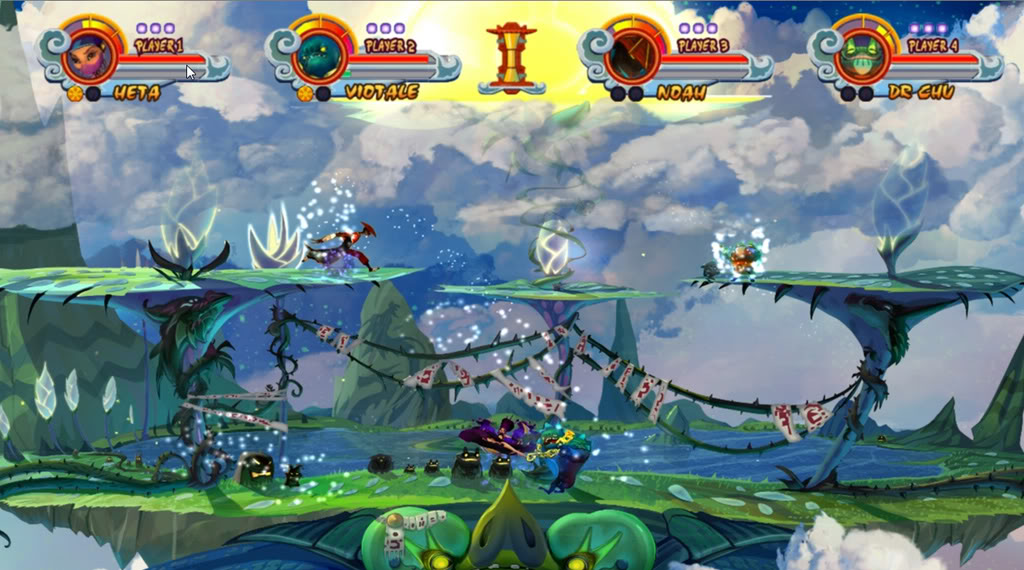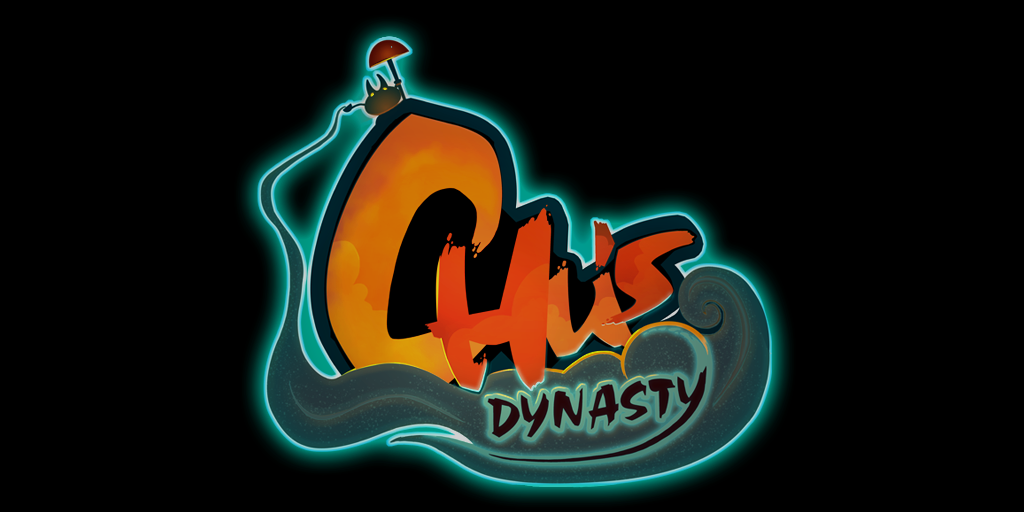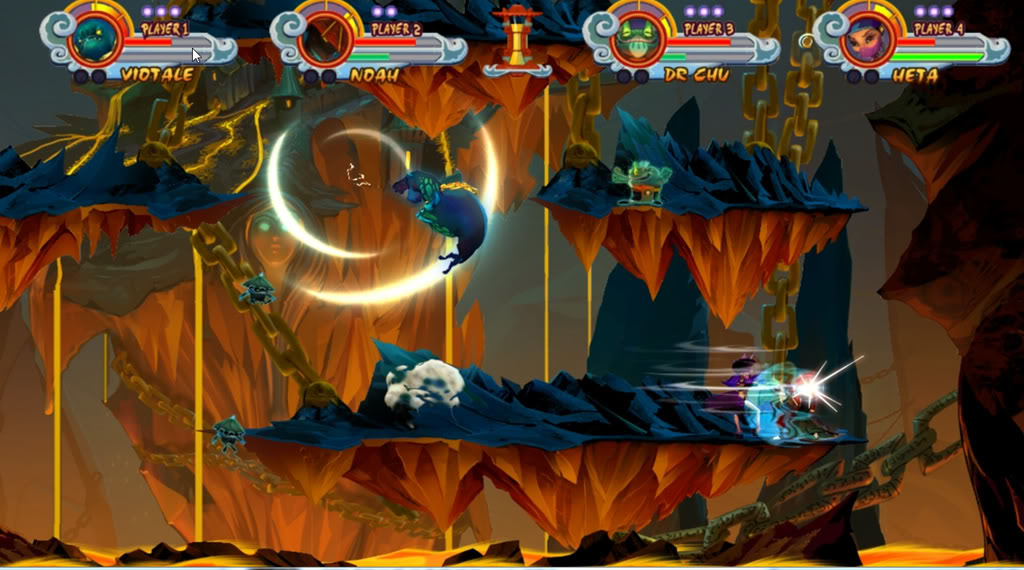This post has not been edited by the GamesBeat staff. Opinions by GamesBeat community writers do not necessarily reflect those of the staff.
Created by three industry veterans who have worked on Lord of the Rings Online, Chu’s Dynasty is just the beginning of a world the indie developers want to immerse gamers in. Tribetoy's Camille Chu fills us in on how the game came to be and how all their hard work paid off in the end.
Louis Garcia: First off, tell me a bit about yourselves. What games have you worked on before?
Camille Chu: Matthew Hoesterey and I have each worked on titles such as Dungeons & Dragons Online, Lord of the Rings Online: Mines of Moria, and some unannounced titles. Tara Rueping has worked on all of the above as well.

From Left: Tara Rueping, Camille Chu and Matthew Hoesterey make up developer Tribetoy.
LG: Why did you all decide to jump into the indie scene and make Chu's Dynasty?
CC: In an odd sort of beginning, Chu's Dynasty started as a gag gift from Matt and me for my family when my mom was battling cancer to cheer up the family during a sad time. Destiny would have it that Tara would come over for a friendly visit, see the game, and offer to make a background for it. The first background, the Tribal board, came out so beautifully and got us all so excited we decided to redo all the characters!
Matt had started to create the backbones of this great game, but when Tara came in and put the face on it, we realized we wanted to take it all the way. We all had professionally developed games in the past, but we were amateur fighting game developers. Besides having a sandbox that we could create our own universe and express ourselves with, and a creative abandon that is hard to achieve during a 9 to 5, we saw that this game held huge potential for us to create a game in a genre that we all enjoyed. Learning, creative freedom, and the rewards of an incredible journey are what made us make the jump.
LG: What parts of the game did each of you work on?
CC: Each of us definitely commanded a certain aspect of the project due to our particular prowess in a given area, but we all did a little bit of everything and collaborated constantly on the overall direction of the game.
Matt was our designer, tech artist, programmer and producer all in one — as well as dabbling in a touch of the sound and writing the story that was later edited by Florence McGinn. He also did a large portion of the fx and is the voice of Viotale and Noah.
Tara was our art director, breathing the look and feel into the game with her art and giving us our art direction. She hand painted all the boards, character models, the designing of the UI, many fx, marketing, as well as constantly collaborating with us all about the conceptual crafting of the world of Chu’s Dynasty.
I myself was the animator. I also picked up a lot of the side tasks in an attempt to take some of the lower profile tasks off of Matt and Tara so they could concentrate on the high profile and most elevated priority tasks of their crafts. I created some UI, some fx, web development, helped with the story, and did some voice acting.
And we couldn’t have done it without the incredible musical talent of Geoffrey Scott. He supervised and recorded the voice over as well as created by hand all the music you hear.

LG: What was development like? This game took two years to complete, right?
CC: Yes, two years. We did most of the development with the three of us crammed into a small living room. We would work our 9 to 5, then come home and put in as many hours as we could on Chu’s. Most weekends had at least one day dedicated to Chu’s as well. This definitely pushed us to our limits, and towards the end we were all a little burnt out, but the end result makes it all worth it.
LG: What were the best and worst parts during development?
CC: The lowest low of development was probably right at the end, about two months before we shipped. We had been using the Torque2D engine, and after two years of development on this engine, Garage Games announced they were winding down operations.
We had already been invited to be in the Indie Games Winter Uprising, and we had all been crunching these crazy after work hours in order to get the game out the door for the deadline, but there was this one, ugly, game-crashing bug that was at the engine level and we needed Garage Games’ support to fix it. When they announced their closing, Matt worked furiously on trying to fix the problem but to no avail. He couldn’t fix it, and it would take us probably another whole six months to port over to another engine. This was the moment when we all really faced the possibility that the past two years of our lives would never see the light of day.
In walks Pino De Fancesco to save the day. Pino was another developer that had been consistently helping Matt with many other issues in the past on the Torque community forums. When we asked for his aid, he agreed. Pino used his 29 years of programming experience to rework the engine and get Chu’s Dynasty to shipping standards.
And the best part we all unanimously agree is right now. Seeing people talk about it on the forums, people having fun. When people say they spent hours playing our game, it makes it all worth it.

LG: Where is Tribetoy based, and did you have a studio or work out of home?
CC: Tribetoy is based in Acton, Massachusetts and San Francisco — all from home.
LG: Now that it's completed and been available for a bit, how do you feel? Did you expect the reception it's received from critics?
CC: We did not expect this at all, and are absolutely thrilled! The Indie Games Winter Uprising gave us a tremendous marketing springboard. The critics have been amazing to us, and even the negative ones we are grateful for, because it means our game is out there and people are playing it.
LG: Sales wise, how has it performed?
CC: Microsoft staggers the information you receive by about a day, so we don’t know how today went, but so far so good.
LG: In a previous e-mail you mention creating a world of characters so that they may appear in many future spin-off games and genres. Is that still something you want to do, and have you given thought to any of the possibilities you may pursue?
CC: We absolutely want to continue the world of Chu. Since Torque has closed, we will need to switch engines, so what we decide with that will heavily dictate the new project. We are not closing off any avenues of growth for the future, and right now are concentrating on doing some immediate updates for Chu’s Dynasty.

LG: So, does Tribetoy play a lot of Street Fighter and Smash Bros. at the office?
Heck yeah! We would have training sessions by the bad Ace’s Devon Cady Lee, Elliot Min, and Ill Will.
LG: What else inspired the game aside from those two video game hits, and where did the idea come from for the time and space manipulation?
CC: JoJo's Bizarre Adventure, Guilty Gear and Soul Caliber. Time manipulation was something we have seen in a lot of genres, but never saw it applied to fighting games. We felt it could add a cool twist.
LG: What is the importance of indie games and services like XBLIG?
CC: A forum that allows people to create and share their art is a great thing. Indie games and XBLIG is a place for people to share their passions. It is also more open for experimentation and exploration, allowing small teams such as ourselves to put our stuff out there — even though we might not have had a million dollars to fund it. It would be very sad if these services were to fade away.
